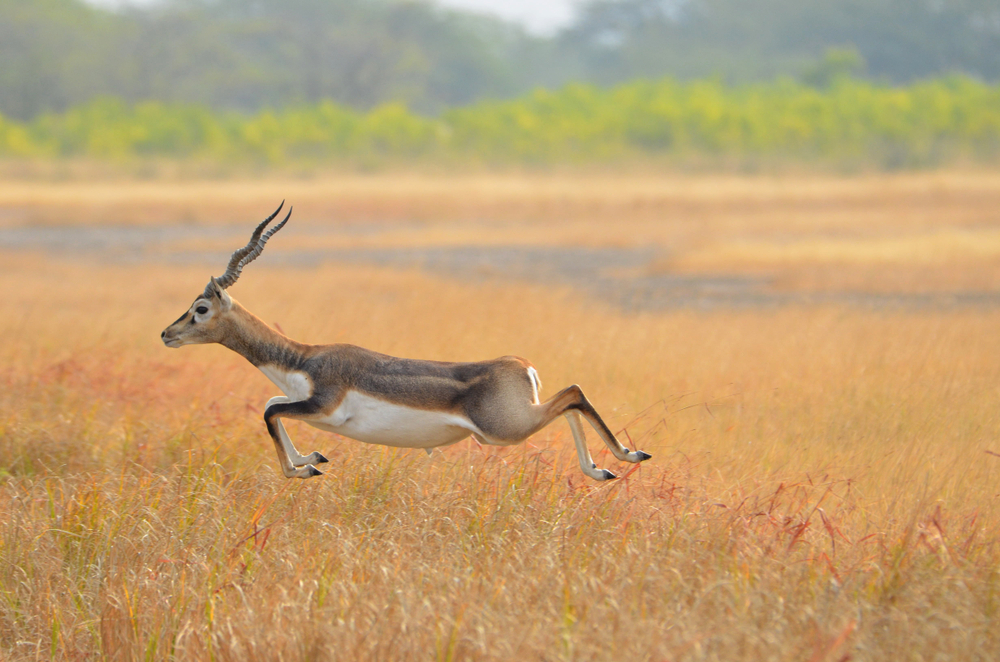Blackbuck Overview
Blackbuck National Park, known locally as Velavadar National Park, is a striking sanctuary in the Bhavnagar District of Gujarat, India. Spanning an area of approximately 13.3 square miles (34.08 square kilometers), it is one of India’s smallest yet most captivating national parks. Established in 1976, the park is nestled along the Gulf of Khambhat and is primarily dedicated to the conservation of the blackbuck, an elegant and endangered species of antelope. The park’s unique landscape, a mixture of grassland, saline plains, and coastal marshes, creates an environment distinct from many other wildlife reserves in India.
The terrain of Blackbuck National Park is a showcase of Gujarat’s semi-arid ecosystem. Vast open grasslands dominate the landscape, interspersed with patches of dry deciduous scrub. The low-lying terrain is flat, allowing for expansive views of the grasslands that shimmer in golden hues during sunrise and sunset. Seasonal wetlands appear during the monsoon, providing a temporary yet vital water source for the park’s wildlife. The northern boundary of the park is fringed with saline lands that add to the ecological diversity. Notable features include the park’s seasonal streams and the adjacent Gulf of Khambhat, which influences the region’s microclimate.
Blackbuck National Park is synonymous with its namesake species, the blackbuck (Antilope cervicapra), renowned for its spiraled horns and graceful movements. The park is home to a thriving population of these antelopes, often seen grazing in herds across the grasslands. Other mammals that inhabit the park include Indian wolves, jackals, striped hyenas, and nilgai (blue bull), making it a haven for predator-prey dynamics. Birdwatchers are particularly drawn to the park for its avian diversity. The wetlands and grasslands attract numerous species of migratory and resident birds, including harriers, sandgrouse, larks, and cranes. The critically endangered Lesser Florican, a small bustard species, is one of the park’s standout avian residents.
The park is a popular destination for wildlife enthusiasts and nature lovers. Visitors can explore its beauty through jeep safaris, which provide a chance to observe blackbucks and other fauna up close. The flat terrain makes the park particularly appealing for photography, allowing for clear shots of animals against the backdrop of golden grasslands. Walking trails also offer an intimate way to experience the park, especially for birdwatchers keen to spot rare species.
Conservation efforts at Blackbuck National Park have seen notable success, especially in protecting the blackbuck population, which was under severe threat due to poaching and habitat loss. However, challenges persist, including human-wildlife conflict, habitat degradation, and climate change impacts. Management strategies focus on restoring grasslands, regulating tourism, and involving local communities in conservation efforts. The park’s designation as a national park has significantly contributed to the preservation of its unique ecosystem and its inhabitants.










































































